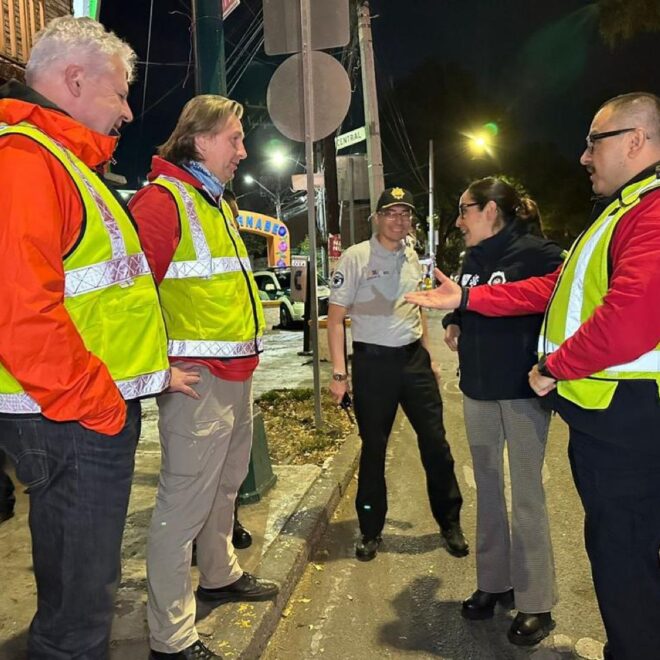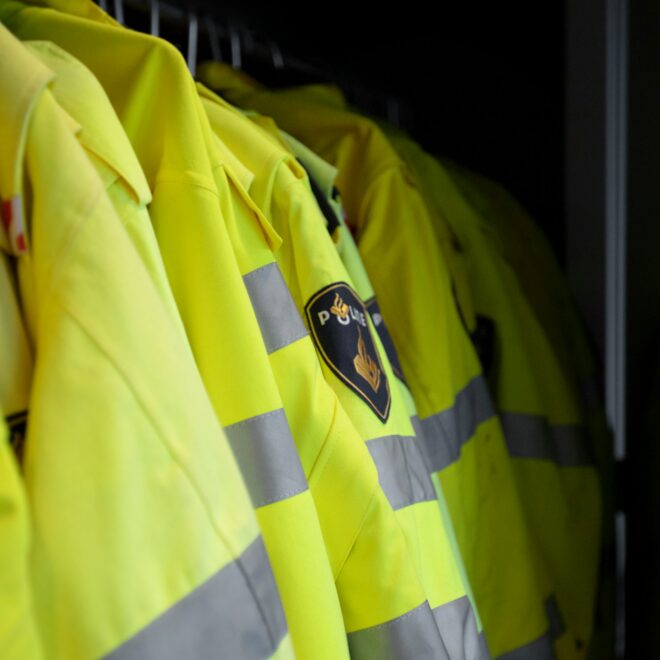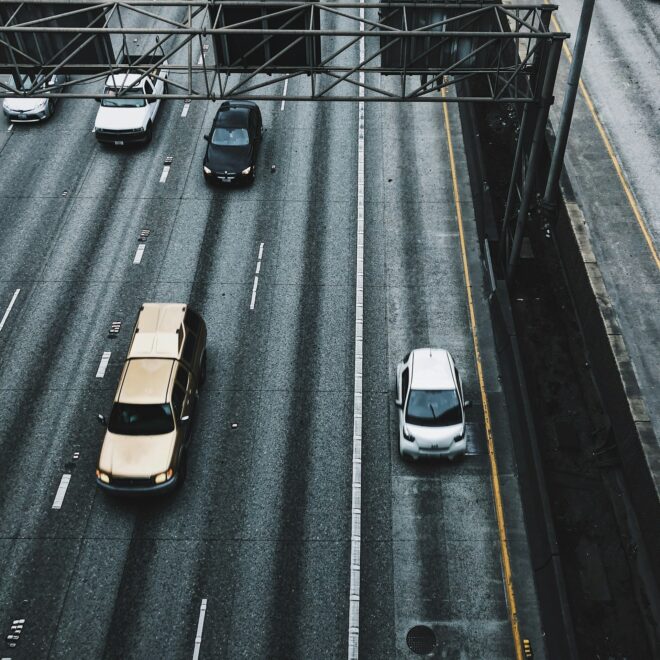

The European Traffic Safety Council (ETSC) recently highlighted a report from the VIAS institute which explained the increased risk that sport utility vehicles (SUVs) and pick-up vehicles create for pedestrians and cyclists. We know that often vulnerable road users are children and the risks these vehicles create are unacceptable.
The study looked at all crashes in Belgium between 2017 and 2021 relating to 300,000 car passengers and vulnerable road users. One of the key findings related to the impact of pick-ups when involved in striking pedestrians and cyclists. For a pedestrian or cyclist hit by a pick-up, the risk of serious injury increases by 90 per cent and the risk of fatal injury by almost 200 per cent.

The European Traffic Safety Council (ETSC) recently highlighted a report from the VIAS institute which explained the increased risk that sport utility vehicles (SUVs) and pick-up vehicles create for pedestrians and cyclists. We know that often vulnerable road users are children and the risks these vehicles create are unacceptable.
The study looked at all crashes in Belgium between 2017 and 2021 relating to 300,000 car passengers and vulnerable road users. One of the key findings related to the impact of pick-ups when involved in striking pedestrians and cyclists. For a pedestrian or cyclist hit by a pick-up, the risk of serious injury increases by 90 per cent and the risk of fatal injury by almost 200 per cent.
The risk of fatal injuries to vulnerable road users increases as the bonnet height of the vehicle hitting them increases. For example, a pedestrian or cyclist hit by a car with a bonnet 90 cm high runs a 30 per cent greater risk of fatal injury than if hit by a vehicle with a bonnet 10 cm lower.
The report also found that SUV occupants are less likely to suffer serious or fatal injuries than car occupants. Occupants of a car involved in a crash with an SUV have a higher risk of serious injury. The risk of serious injury decreases by 25 per cent for SUV occupants but increases by 20 per cent for occupants of a car involved in a crash with an SUV.
When police investigate serious crashes, particularly those involving vulnerable road users, it is essential to ensure that accurate information is recorded, such as vehicle make, model, year of manufacture and bonnet height. It is also essential that accurate information on the exact nature of ‘all’ injuries is recorded.
By collecting this data, researchers can identify the differences in crash outcomes that result from different classes of vehicle so that ‘evidence based’ policy decisions can be made.
The research undertaken by VIAS is a compelling example of how police and researchers can work together to ensure that essential vehicle crash performance information is reported accurately within crash reporting processes, publicized and acted upon.
Police have an essential role in holding vehicle manufacturers to account when vehicle models create unacceptable risk for vulnerable road users and passengers in other vehicles.
Dave Cliff CEO,
GRSP
In 2023, the Global Road Safety Partnership’s (GRSP) Road Policing Capacity Building (RPCB) team officially expanded its operations to include Mexico and Brazil in their portfolio. This key development integrated the cities of Guadalajara, Mexico City, Salvador, Recife, São Paulo, and Campinas.

In 2023, the Global Road Safety Partnership’s (GRSP) Road Policing Capacity Building (RPCB) team officially expanded its operations to include Mexico and Brazil in their portfolio. This key development integrated the cities of Guadalajara, Mexico City, Salvador, Recife, São Paulo, and Campinas.
Between 8-12 January 2024, the RPCB programme’s Manager Marcin Flieger and Senior Officer in Road Policing Robert Susanj visited Guadalajara and Mexico City to meet with the local Bloomberg Philanthropies Initiative for Global Road Safety (BIGRS) team, enforcement agencies and representatives from Mexico City’s police academy.
The RPCB team encountered a gracious reception and a strong willingness to engage in the programme’s activities. Additionally, they participated in two roadside interventions: a nocturnal drink driving operation and a daytime motorcycle enforcement operation.
Throughout the visit, the team collected insights regarding current circumstances in each city, placing emphasis on identifying the requirements and expectations of the local enforcement partners. The data will serve as the foundation for the development of the RPCB programme for the year 2024, which is set to commence its implementation phase in March.


Vehicle safety is a critical part of the Safe System approach to road safety. Event Data Recorders (EDR) technology has been around for numerous years and has contributed significantly to an increase in the safety of vehicles currently being produced and used on roads across the globe today.
Originally fitted to vehicles for that purpose, the use of EDR as part of crash investigation, whether that be for criminal prosecutions, coronial inquest, or litigation, has become widespread. This has contributed not only to vehicle safety but also to investigations and enforcement.
Vehicle safety is a critical part of the Safe System approach to road safety. Event Data Recorders (EDR) technology has been around for numerous years and has contributed significantly to an increase in the safety of vehicles currently being produced and used on roads across the globe today.
Originally fitted to vehicles for that purpose, the use of EDR as part of crash investigation, whether that be for criminal prosecutions, coronial inquest, or litigation, has become widespread. This has contributed not only to vehicle safety but also to investigations and enforcement.
What is an EDR?
An EDR can be described as a ‘device’ installed in a motor vehicle to record technical, vehicle, and occupant information for a brief period (seconds, not minutes) before, during, and after a crash1.
These ‘modules’ or ‘devices’ vary in type between individual vehicles and vehicle manufacturers. The type and times of data recorded during an ‘event’ can also vary but deliver information that includes driver inputs, such as steering and braking, the use of safety restraint systems (SRS), and the activation of secondary safety equipment such as automatic collision avoidance systems (CAS).
Legislation
Just as the types of devices can vary, the legislation that supports them varies between jurisdictions. The European Commission has recently introduced regulations, making it a mandatory requirement for all new passenger cars and light vehicles up to 3,500 kilograms to be fitted with EDR by July 20242.
The United States of America, whilst not having a mandatory requirement, has legislation that outlines the technical requirements for EDR once fitted including their survivability in crashes3. It should also be noted that whilst not internationally a requirement to be fitted, vehicle manufacturers routinely fit these modules as a standard part of the vehicle safety systems.
Legislation governing the use of data captured on EDR can also vary greatly between jurisdictions, with some countries requiring court orders or warrants to seize and use the data obtained. Others such as New Zealand have legislation that allows, under certain circumstances, to seize without warrant EDR crash data.
Summary
Having consideration of any jurisdictional legal requirements and rules of evidence, crash data downloaded and interpreted from an EDR by a trained and experienced operator can not only provide critical evidence for investigators, but also for vehicle manufacturers and traffic crash analysts alike.
As vehicle technology continues to improve, the use of devices such as EDR has the potential to significantly contribute to global efforts to reduce road traffic crashes, deaths, and injuries.
A report released by Monash University and publicized by our member, the National Road Safety Partnership Program (NRSPP), provides a timely reminder of the multiple benefits that are achieved when fleet owners implement Eco-Safe Driving.
A report released by Monash University and publicized by our member, the National Road Safety Partnership Program (NRSPP), provides a timely reminder of the multiple benefits that are achieved when fleet owners implement Eco-Safe Driving.
The study highlights that:
Can reduce fuel consumption alone by up to 30 per cent. When these savings are multiplied across large fleets, the financial savings and injury reduction are substantial.
The NRSPP research suggests the use of telematics can halve the number of crashes, emphasizing the effectiveness of technology in improving driver behaviour because:
Injuries from poor driving behaviour were the third leading cause of death and disability-adjusted life years (DALY) for people aged 25 – 44 between 2017 and 2019 in Australia. In addition to the direct impact of fleet costs for organizations, these injuries and fatalities have a direct impact on fleet service, delivery management, including rescheduling deliveries, and diverting fleet manager attention from operating efficient and safe fleets. There are also costs associated with replacing injured workers.
The major safety and environmental benefits that are achieved by implementing Eco-Safe Driving make this practice good for business and good for communities. The Global Road Safety Partnership (GRSP) encourages fleet owners to prioritize implementing these practices.
